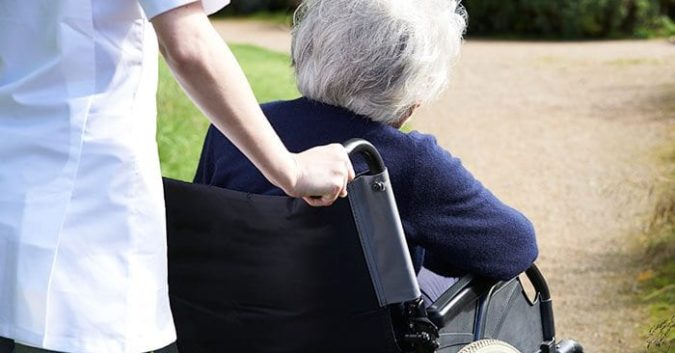There are about 1.6 million Americans living inside of roughly 15,000 nursing homes across the United States. Yes, these are big numbers, but surprisingly, they’re not big enough. Despite the ever-growing population of our nation’s elders — people 85 years and older — the number of skilled nursing homes in America has remained stagnant for over a decade.
In the year 2000, there were about 4 million people aged 85 or older, but by 2012, that number skyrocketed to 5.8 million. That means that in a 12-year span, the U.S gained about 2 million extra elderly people, but added no new nursing homes.
If that lack of growth sounds a little startling, well… it gets even worse. Nursing homes are expected to fail and close down at a rate of 20 percent by 2021. 2021 is only 5 years away and by the time it rolls around, America will have lost 3,000 nursing homes while gaining another 1 million elderly people.
How is it possible for there to be such a boom in the elderly population, yet such complete failure in the industry that caters to that population? There are several causes for the downturn in nursing homes, not least of which are staff shortages and complications with the Medicare and Medicaid programs.
As Homes Close, Low-Quality Corporate Chains Will Overrun the Industry
The majority of nursing homes, from small “mom and pop” operations to major chains, rely on Medicare and Medicaid reimbursement for 90 percent of their revenues. Recent cuts and adjustments made to the Affordable Care Act (Or, “Obamacare”, to most) have reduced reimbursement and cut into nursing home profitability.
According to some experts, these cuts will hurt smaller nursing homes quite a bit. Unlike non-profits, which have excellent fundraising capabilities, small, private facilities live or die by reimbursements. In contrast, massive chains owned by Wall St. investment groups will continue to generate profits and will, in time, completely dominate the market.
And, for-profit nursing homes running the nursing home industry? That’s a frightening thing.
For-Profit Companies Also Take Advantage of the Government: What Else Is New?
What’s perhaps most unsettling is that corporate-chain nursing homes make their money by abusing the Medicaid system. These homes administer so-called "ultrahigh" therapy to residents whether they need it or not.
Such "ultrahigh" therapy is, as the name would imply, also ultra-expensive. Between 2002 and 2013, corporate homes increased the total number of days of ultrahigh therapy they billed Medicaid for from 7 percent to 54 percent of days. This means many residents are receiving intense therapy for more than half of the time they’re in a nursing home — and often unnecessarily.
When this “profit at all costs” mentality is considered, it’s not at all surprising that corporate-owned, for-profit homes have been shown to offer some of the worst care in the country.
Nursing home chains are statistically more likely to cut their staff to illegally low levels of 1 registered nurse per 20 patients. In many high-population states like New York and Massachusetts, these staffing shortages cause for-profit homes to have a 60 percent higher rate of health and safety violations.
You don’t need to be a statistician to know that these figures are completely unacceptable.
Longer Lifespans Mean Diminished Profits for Nursing Homes
In several cases, ultrahigh therapy has actually led to the deaths of residents. One would think that resident deaths would be bad business for nursing homes, but it's just the opposite. Though they’re in the business of long-term health care, many larger nursing homes would prefer to administer costly therapy to residents for short, concentrated bursts, rather than provide lasting care over a long duration. Truly effective long-term care requires proper staffing and resources and these things are simply not as lucrative as cutting staff and drumming up bogus therapy to bill the government.
As the average lifespan of U.S. citizens continues to increase, more families are looking for facilities that are truly in it for the long haul. More and more, in-home or hospice programs are the solution to problems presented by modern nursing homes.
These programs may also be covered by Medicaid and are much cheaper than traditional homes. Assisted-living homes are another popular alternative that offer day-to-day care but lack skilled professionals to help residents with serious ailments.
A Slow Death or a Chance for Rebirth?
The traditional nursing home is, quite simply, not meeting the needs of the people. Too many facilities are preoccupied with profit and the result is that families feel their services aren’t worth the cost.
Medicare cuts, extended lifespans, and understaffing are all symptoms of the problem, but they needn’t be the root cause. If more nursing homes can find a way to prioritize patients over greed and profit, maybe the projected 20 percent decrease can be stopped. If not, this may be the beginning of the end for an institution that was once crucial to American families.
